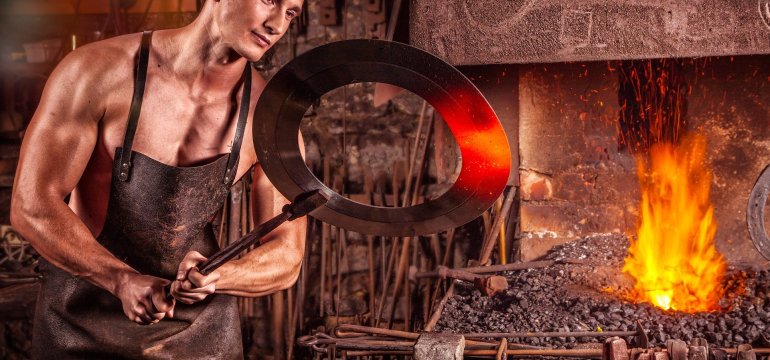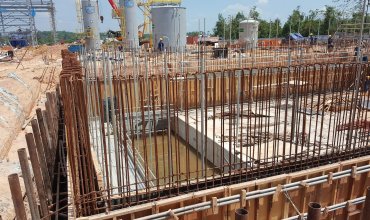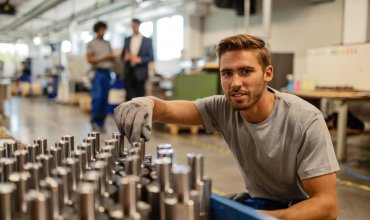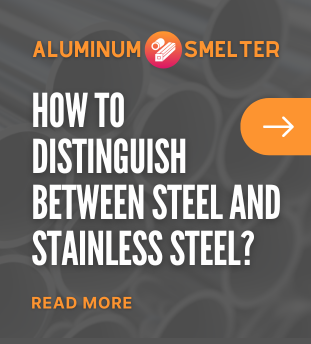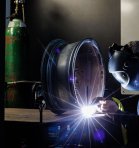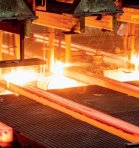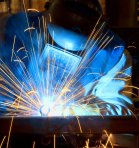Hardening steel is a process that plays an extremely important role in many industries, from the manufacture of tools and machinery to the construction of bridges and infrastructure. What to harden steel with, and what temperature is most suitable for this, are questions that are asked by both professionals and amateurs trying their hand at metalworking. In this article we will try to cover most aspects of this complex process, from basic definitions, through technical details, to a specific application in Polish conditions. This article aims to comprehensively cover all aspects of steel hardening, so that every reader, regardless of his or her level of expertise, can find something for himself or herself.
What is the process of hardening steel?
Hardening steel is a heat treatment technique that involves heating steel to a certain temperature and then rapidly cooling it in a cooling medium. The purpose of this process is to strengthen the material by increasing its hardness and wear resistance. But what to harden steel with in practice? What should be considered when choosing a hardening process?
Hardening is mainly applied to production tools, industrial machinery and structural components of infrastructure. Imagine that a steel work tool is subjected to constant wear. A standard piece of steel would not be able to withstand such stress. Therefore, hardening is an essential process that makes steel more resistant to use.
What to harden steel with so as to achieve the best results? An important part of the process is choosing the right cooling medium. In practice, various media are used, such as water, oils, salts or even air. The choice depends on the desired end properties of the steel, such as hardness, elasticity or fracture toughness. Each of these media has its own advantages and disadvantages, and their effectiveness depends on many factors, such as the type of steel and the thickness of the parts.
What temperature is optimal for hardening steel?
There is no definite answer to the question of what temperature is optimal for hardening steel, because it depends on the type of steel you intend to harden. Typically, the hardening process takes place in the temperature range of 800°C to 1000°C. However, for some steels, such as high-alloy steel, the quenching temperature can be much higher, reaching up to 1300°C.
Knowing the chemical composition of the steel is crucial to determining the correct quenching temperature. Low-carbon steel requires lower hardening temperatures than high-carbon steel. For example, tool steel used to make sharp tools must be hardened at higher temperatures to achieve the right hardness.
When steel is subjected to the hardening process, its crystal structure changes. This creates a martensite structure, which is characterized by high hardness. However, without proper control of the temperature and quenching time, we may not achieve the expected results and expose the material to unwanted cracks or distortion.
The process of temperature control and its even distribution throughout the steel requires the use of advanced quenching furnaces and appropriate temperature sensors. In Poland, the availability of such technology and specialized steel quenching services is widespread, giving local manufacturers and entrepreneurs great opportunities to enhance the quality of their products.
Different methods of hardening steel
Several steel hardening methods are used in Poland, each with its own specific applications and tailored to different types of steel and end requirements. Among the most popular methods are:
Hardening in oil
One of the most commonly used methods is quenching in oil. Quenching oils have a higher viscosity and a lower cooling rate compared to water, which minimizes the risk of cracking and deformation of the hardened steel. Oils are particularly useful for hardening high-alloy steels and parts with complex shapes.
Hardening in water
Water as a cooling medium is mainly used in cases where rapid cooling speeds are needed. It is one of the oldest and simplest methods, but its use requires great care to avoid the risk of material cracking. Water is mainly used for simple parts with low susceptibility to cracking.
Air quenching
Air quenching involves using air as a cooling medium. It is a relatively slow method and is mainly used for steels with high susceptibility to cracking and for components with a large surface area.
Hardening in salts
In cases where more precise control of the cooling rate is required, salt baths are used. Salt baths, due to their high thermal stability, allow the hardening process to be carried out evenly, even in very complex parts.
Hardening in specialized atmospheres
Some hardening processes require specialized atmospheres, such as protective atmospheres of nitrogen or gas mixtures. This type of hardening is used in high-tech products that require absolute precision and minimal final distortion.
Hardening process: step by step
Hardening of steel consists of several basic steps:
Preparation of the steel
Before hardening, the steel must be properly prepared. This includes cleaning its surface and any preheating. This is because impurities can affect the effectiveness of the hardening process and the quality of the final product.
Preheating to the right temperature
Preheating is one of the most important steps. What temperature is appropriate depends on the type of steel to be hardened and its chemical composition. It is important to heat the steel evenly to the desired hardening temperature.
Cooling
Cooling, which is the heart of the quenching process, can be done in one of the previously mentioned media: water, oil, air, brines. The rate of cooling affects the microstructure of the steel and, consequently, its mechanical properties.
Annealing
After hardening, an additional annealing process is often used to reduce internal stresses in the steel and improve its elasticity. Annealing involves heating the hardened steel to lower temperatures (usually 150-200°C) and controlled cooling.
Finishing
When quenching is complete, the steel is subjected to finishing processes, such as grinding or polishing, to obtain a suitable surface.
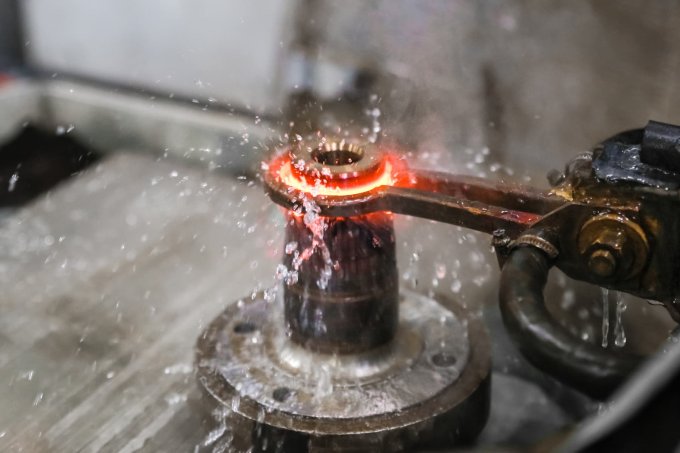
Applications of hardened steel in Poland
Hardened steel is widely used in many Polish industries. It is used in the tool, machine and automotive industries, as well as in construction, among others. The high quality of hardened steel is crucial to the durability and reliability of the final products.
Tool industry
In Poland, production tools such as drills, cutters and shears are often made of hardened steel, which provides them with high durability and wear resistance. This allows these tools to work with high precision and efficiency for a long time.
Construction
Hardened steel is also widely used in the construction industry. Structural elements of bridges, skyscrapers or other large structures need to be extremely strong, and this is ensured by a properly conducted hardening process.
Automotive
In the automotive industry, hardening steel is essential for parts such as crankshafts, pistons and chassis components. Hardened automotive components are more resistant to high loads and prolonged use, which significantly affects the safety and performance of vehicles.
Machinery industry
In the Polish machinery industry, hardened steel is used for components such as gears, gears and drive shafts. These components must be characterized by high durability so that machines can operate without failure for a long time.
Unique hardening techniques
In addition to traditional hardening methods, more advanced techniques are becoming increasingly popular, such as:
Laser hardening
Laser hardening involves the use of a high-energy laser to heat the surface of the steel to the hardening temperature and then rapidly cool that surface. This technique allows precise hardening of selected areas, which is particularly useful in complex and precise designs.
Induction hardening
The induction hardening technique is based on the use of an electromagnetic field to generate heat in a steel component. It is a very fast method that allows selected areas of steel to be hardened with high precision. The process is particularly popular in the manufacture of automotive and machinery parts.
Cryogenic hardening
Cryogenic hardening involves cooling the hardened steel to extremely low temperatures (below -170°C). This process further strengthens the steel's mechanical properties, such as hardness and strength, by removing residual austenite. This is an advanced technique used in the production of tools and components requiring extreme durability.
Precision methods for controlling the hardening process
In Poland, as in the rest of the world, precise control of the quenching process is crucial for obtaining high-quality steel products. Modern technologies allow precise monitoring and control of temperature, heating and cooling times, resulting in uniform and repeatable results.
Thermograms and pyrometers
Thermograms and pyrometers are tools used to accurately measure temperature during quenching. They allow the process to be precisely monitored and adjusted, which is key to achieving high quality hardened steel.
Automatic control systems
Modern hardening plants use advanced control systems that automatically adjust process parameters, such as temperature, heating and cooling times, based on defined algorithms. This makes it possible to achieve exceptional precision and repeatability in production.
Microstructure analysis
After the quenching process is completed, the quenched steel is often subjected to microstructure analysis to ensure that the mechanical properties obtained are as required. This analysis makes it possible to assess the quality of the hardening and identify any defects.
Benefits of hardening steel
Hardening steel has a number of benefits that are crucial for various industries. What to harden the steel with and what temperature is appropriate are decisions that affect the final properties of the product. The main benefits of hardening steel include:
Increased hardness
The hardening process significantly increases the hardness of steel, making it more resistant to wear and damage. As a result, hardened parts can operate in harsh environments for long periods of time without losing their properties.
Resistance to corrosion
Hardening improves the steel's resistance to external agents such as moisture and chemicals, which is crucial for components used outdoors or in aggressive environments.
Improved mechanical strength
Hardening improves mechanical strength, allowing the steel to withstand greater loads and operate in more demanding applications. This is particularly important in engineering and machinery structures.
Longer service life
Thanks to increased hardness and corrosion resistance, as well as mechanical strength, hardened steel products have a longer service life. This means lower costs for component replacement and maintenance, which is economically beneficial.
Challenges and problems associated with hardening steel
Despite its many benefits, hardening steel also brings with it some challenges and problems that must be taken into account to achieve the desired results.
Cracking and deformation
The rapid cooling that is part of the hardening process can cause cracking or deformation of the steel, especially in large or complex parts. Choosing the right cooling medium and controlling the cooling rate are key to minimizing this risk.
Internal stresses
Quenching creates internal stresses in the steel, which can lead to cracking and reduced material strength. Post-hardening annealing is often used to reduce these stresses and improve the properties of the final product.
Choosing the right technique
There are many hardening techniques, and choosing the right method requires a careful analysis of the requirements of the final product and the properties of the hardened steel. Each method has its own specific applications and benefits, but also limitations that must be considered.
Costs
The costs associated with advanced hardening technologies can be significant. Although investment in modern control systems and cooling media can bring benefits in the form of higher product quality, the initial financial outlay can be high.
Summary
Hardening steel is a complex process that plays a key role in many industries. By heating steel to a certain temperature and rapidly cooling it, the process significantly increases the hardness, strength and corrosion resistance of steel, which is essential for many applications.
What to harden the steel with and what temperature would be appropriate are decisions that must be made based on a careful analysis of the type of steel, its chemical composition and the requirements of the final product. Advanced hardening techniques, such as induction hardening, laser hardening and cryogenic hardening, allow the process to be carried out accurately and efficiently, although there are challenges and costs involved.
In Poland, steel hardening is widely used in many industries, from tooling to automotive to construction. The high quality of hardened steel is crucial to the durability and reliability of many products, and modern technologies and methods for controlling the hardening process allow for excellent results.
In summary, steel hardening is an indispensable part of many manufacturing processes, and proper understanding and application of this technique can significantly improve the quality and durability of final products. Thanks to constant advances in hardening technology and methods, Poland has the opportunity to benefit from the most za


